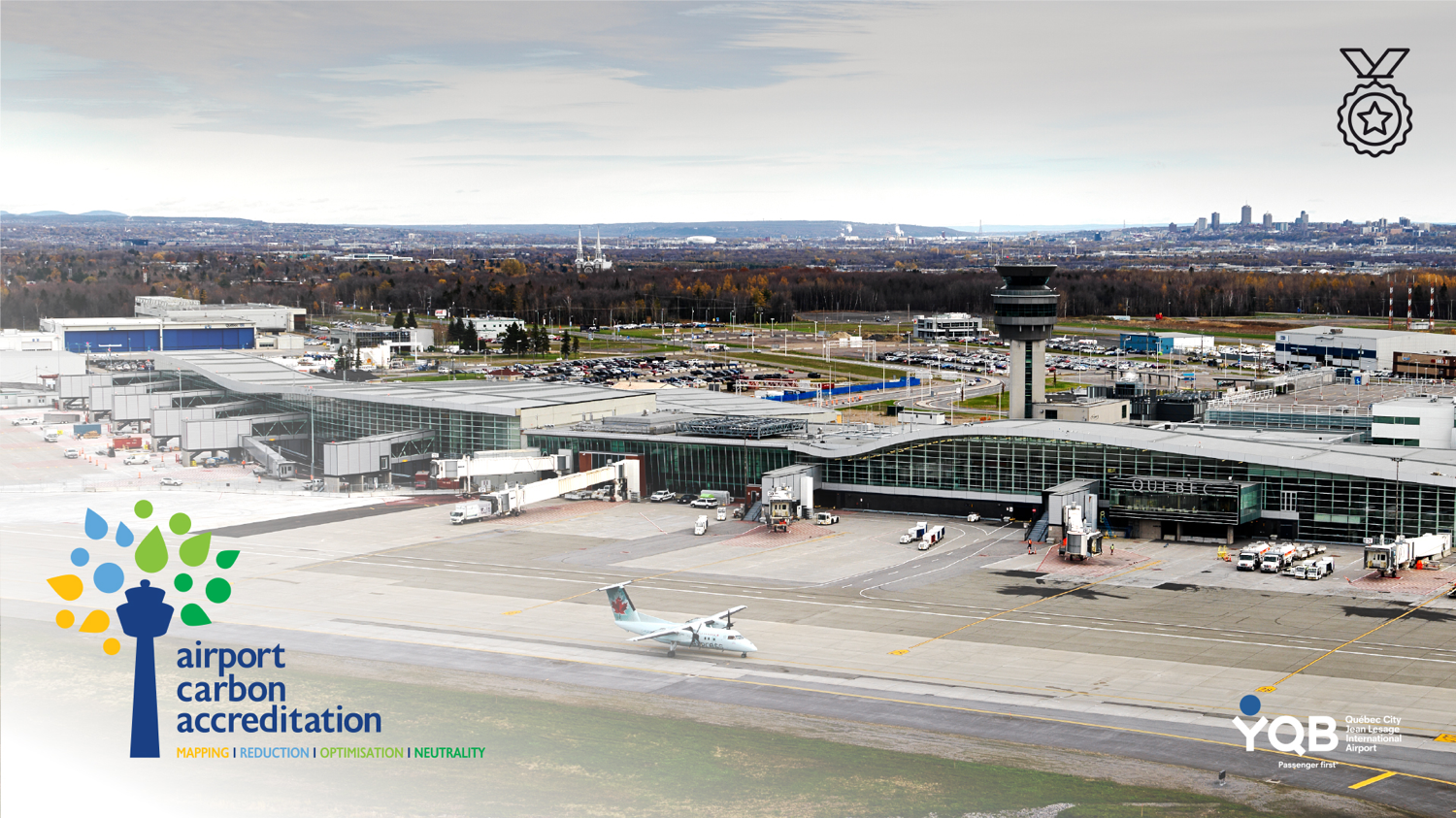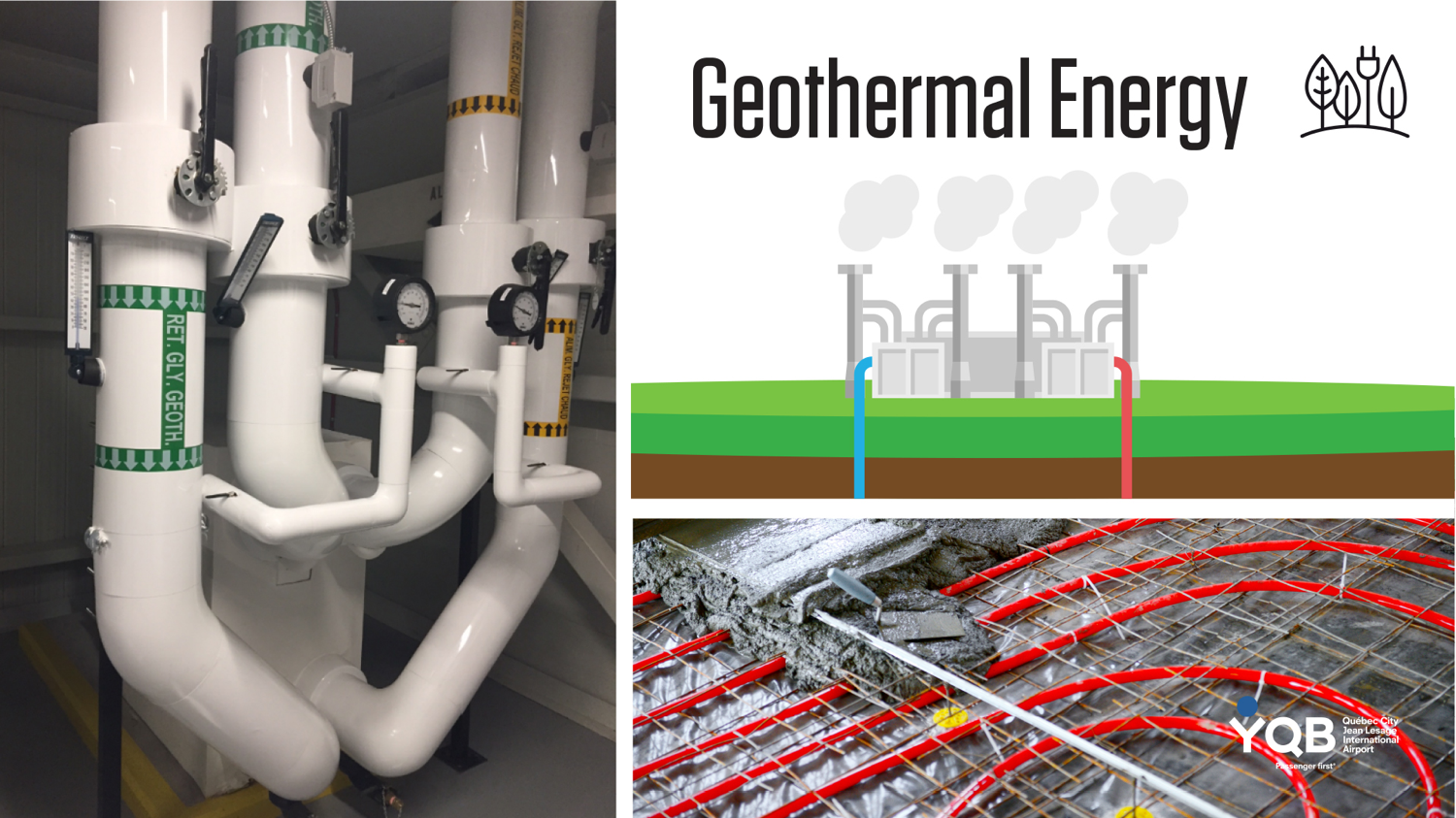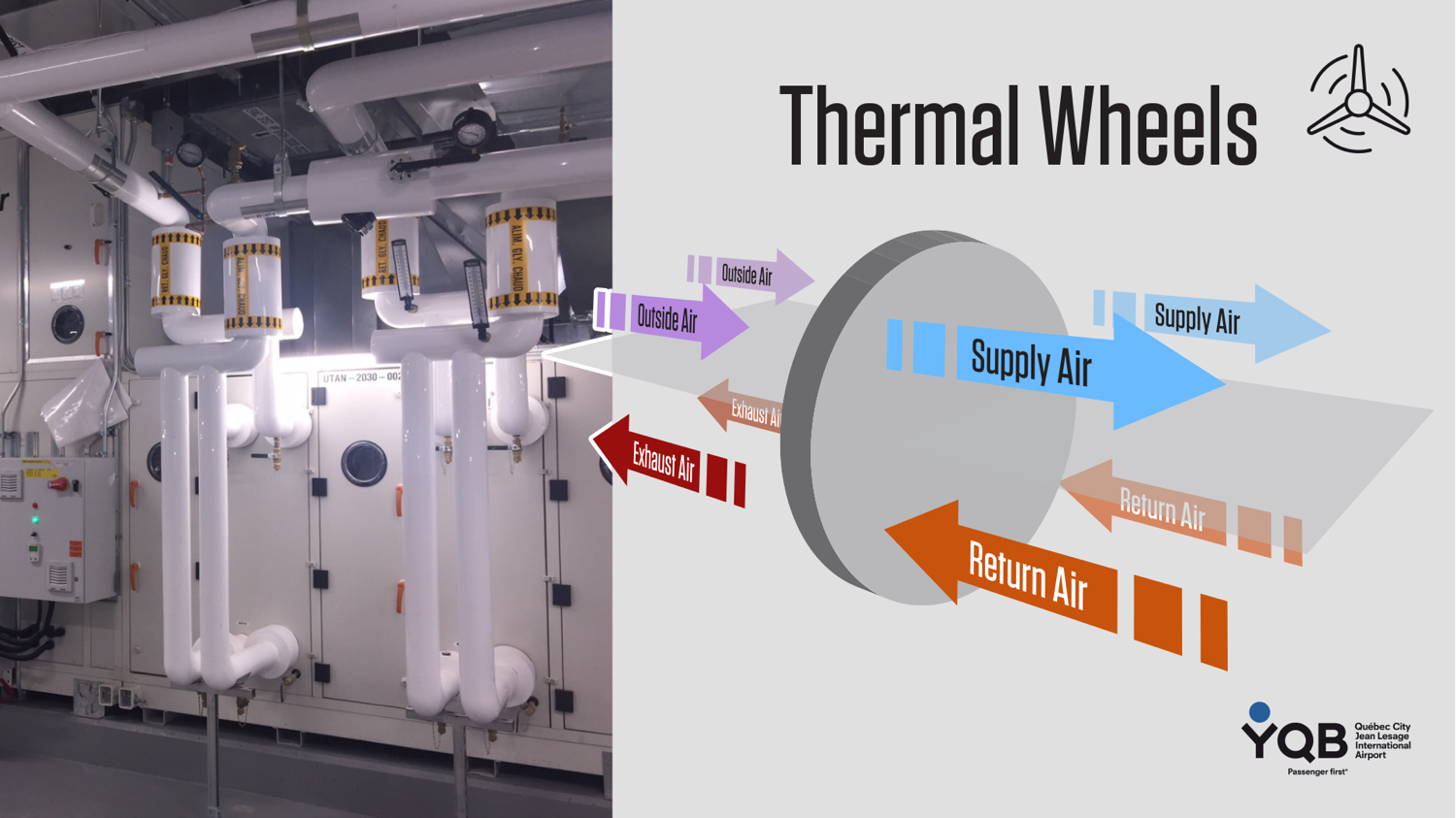
The Passenger Terminal Expo, convention, from March 20 to 22, 2018, brought together hundreds of representatives from the worldwide airport industry. Québec City Jean Lesage International Airport (YQB) was asked to explain how it was able to become a model for sustainable development in the industry.
A five-point overview of the talk given by our VP for Infrastructures, Daniel Perreault.
Q.1. What reasons did the airport have to go green?

Sustainable development is a priority for YQB. As part of its sustainable development policy, the airport has committed to ensuring ongoing improvement in its environmental performance, by integrating the principles of sustainable development into its planning process and everyday activities.
The effectiveness of YQB's environmental management was recognized when it was awarded Level 1 Airport Carbon Accreditation (ACA) last fall. ACA is a worldwide certification program for carbon management set up by Airport Council International (ACI). The program assesses and recognizes the efforts made by airports to reduce greenhouse gas emissions, and is audited by an independent third party. There are four accreditation levels: mapping (level 1), reduction (level 2), optimization (level 3) and neutrality (level 3+). YQB should shortly receive Level 2 accreditation.
Q.2. How did you implement this priority, and make your dream a reality?
To identify what concrete steps we could take in our specific situation, based on our environment, budget, timetable and operations, we commissioned a specialized firm to produce an energy savings study before work began on the YQB 2018 project. The firm was asked to assess how the new infrastructures could be made as energy-efficient as possible. After receiving the results, YQB set itself the objective of implementing all the proposed measures. A few examples are given in the answer to the next question.
Q.3. What are the main energy-efficiency measures taken as part of the YQB 2018 proect?
Geothermal energy

Geothermal energy is now a major energy source for the Québec City airport facilities. This clean, renewable energy comes from deep below the ground, and is used to both heat and cool the terminal building. The new terminal has its own heating and cooling plant, with two plate heat exchangers connected to 54 wells to transfer energy from the soil to our hot water circuit. The heat generated by our helical rotary chillers is also transferred to the hot water circuit, which then heats the terminal via a radiant floor system with 43 km of piping.
Automated lighting

The lighting system for the new international terminal is equipped with light detectors to ensure that the lighting intensity is automatically adjusted to match the natural light level. In addition, the use of LED lighting units offers energy savings and a longer lifespan than fluorescent lighting. The system is therefore more efficient and better adapted to lighting the terminal building 24 hours per day.
Heat recovery

By recovering heat from exhaust air and transferring it to the fresh air entering the terminal building, via two thermal wheels incorporated into the ventilation system, YQB can store heat and also reduce moisture in the fresh air that enters the building.
Controlling the inflow of fresh air
CO2 detectors will be installed at strategic locations in the terminal to reduce the inflow of fresh air in certain zones where the occupation rate varies widely, such as the arrival and departure halls. The detectors govern the motors that drive the fresh air units to optimize the air exchange process.
Q.4. Can you put a figure on the savings made?
The new terminal was commissioned last fall and welcomed its first passengers on December 11, 2017. It is too soon to make an accurate assessment of the savings generated by the measures, since we will need to have completed a full seasonal cycle to obtain the data required. However, some figures are already available:
- The use of geothermal energy will save over 200,000 cubic metres of natural gas on an annual basis.
- According to the simulations conducted by our engineers, we should see a return on investment within five operating years.
- Thanks to heat recovery from air, the compressors and the geothermal system, we were able to heat the terminal without using natural gas heating for most of the winter. The conventional heating was only turned on when the outdoor temperature dropped below minus 20 degrees Celsius.
Q.5. Apart from the money and energy saved, have there been any other benefits?
Absolutely. In addition to reducing greenhouse gas (CO2) emissions by around 1300 tonnes per year, passenger comfort has improved. For example, the automated radiant heating system ensures that the temperature remains constant throughout the terminal building. Since the heat does not come from outlets on the floor, all passengers enjoy the same level of comfort. The automated system also limit the need to manually set lighting, heating and air exchange controls. The key advantage of the new systems is that they have been designed to work together, and not just individually. For example, the heat recovered from the cooling system interacts with three other systems. Overall, the various energy measures implemented at YQB act as a single system that minimizes energy use while maximizing the comfort of terminal users.
Follow us on LinkedIn to learn more about YQB activities.
